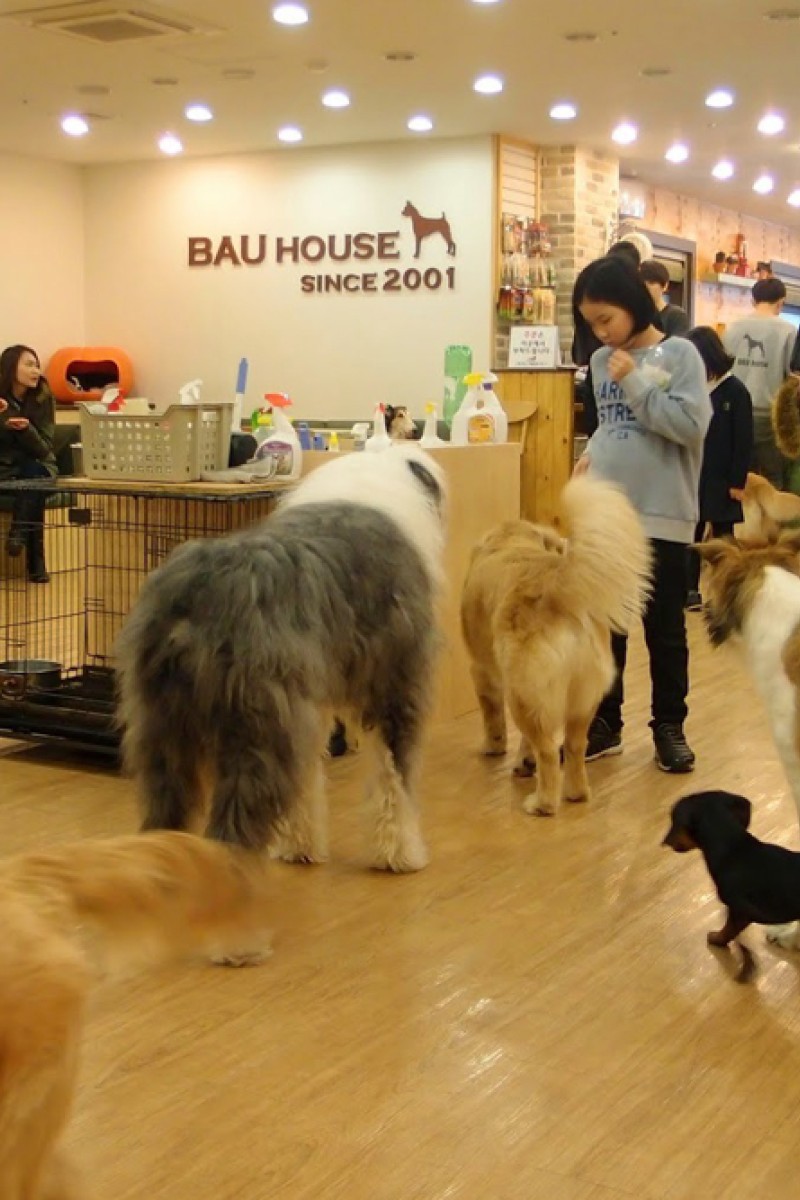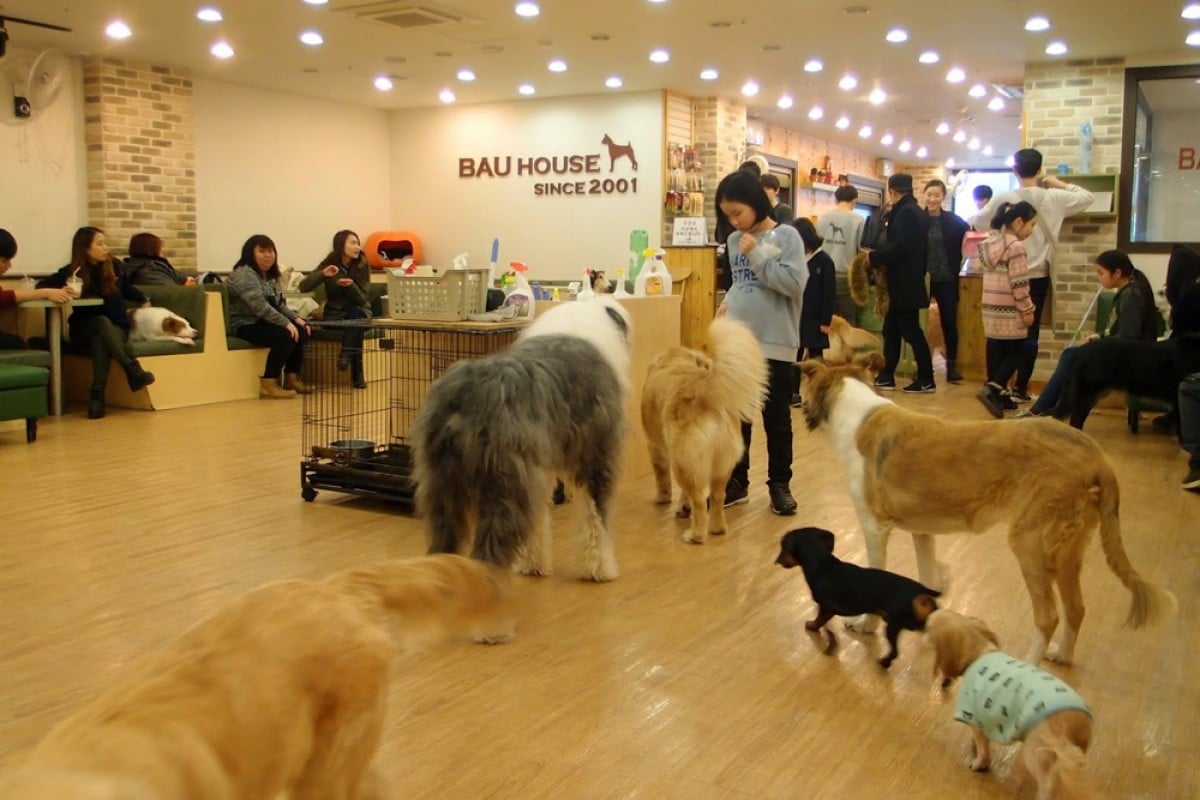
South Korean cafes serve more than just coffee, it's an experience - and Hong Kong needs to catch up on that cafe culture
Dog cafes, cat cafes, even raccoon cafes are scattered around Seoul, giving young Koreans an endless list of things to do. What’s stopping Hong Kong from doing the same?
 Want to pet a dog? There’s a cafe for that in South Korea.
Want to pet a dog? There’s a cafe for that in South Korea.Street after street of magnificent restaurants; row after row of cosmetic shops; line after line of K-pop fans waiting to buy their favourite group’s merchandise … that’s what most people normally associate South Korean culture with.
But nestled in between all of these people and places is something we don’t seem to love as much in Hong Kong: cafes. They’re absolutely everywhere. Every corner you turn, every building you look up at, there’s bound to be one in your eyeline.
Are South Koreans just huge fans of coffee? Not particularly. While they are Asia’s top consumer per capita, the South Koreans have barely a sniff on the world’s top 20.
“I can’t function without my morning coffee,” is a common phrase heard in workplaces and campuses across the world. People used to frequent cafes for a morning shake-up or an afternoon kick. This soon evolved into cafes being used as meet-up points, venue for study sessions, or places for late-night chats. But there has been another shift in cafe culture, and the South Koreans have pounced on it quick.
Cafes in South Korea aren’t like the majority we have here; they have board game cafes, comic book cafes, dog-petting cafes, cat-petting cafes, raccoon-petting cafes (really), and now even VR cafes. The list goes on and the themes become increasingly obscure – but that means there’s something for everyone.
Nowadays, a cappuccino or a latte is an added bonus to the cafe experience, because a cafe’s prime function has become socialising and entertainment. “People come to try something new. Ordering a coffee is just a formality – think of it as the admission fee for the experience … in our case, it’s petting dogs,” explained Yeo Ji-young, an employee at a dog cafe in Cheonan, a city on the outskirts of Seoul.
“There are still traditional cafes everywhere, but baristas are expected to do much more than just produce a good cup of coffee; at the bare minimum, they must be able to whip up a bingsu,” added 21-year-old Yeo. Bingsu, or patbingsu, is a shaved ice dessert topped with a variety of sweet flavours, including red bean, coffee, cream cheese … the list goes on.
Cafes have hijacked the idea of serving bingsu from establishments that solely sell the sweet treat, and have started serving mountains of sweet shaven ice themselves, attracting a whole new demographic.
It begs the question: Why can’t Hong Kong do the same? Young Hongkongers struggle to find good places to meet up, with some not even considering cafes as an option.
“If my purpose was to sit down and chill with a friend, a coffee shop would not be my first choice,” said coffee consumer Kevin Lee, 19, a half-Korean, half-Chinese student living in Hong Kong. “I think I’ve sat down in a cafe twice in the last year – both times because I was desperate for wi-fi.”
Instead, they have to stroll around a shopping mall to pass the time or pay for a token meal if they want a seat. If they want entertainment, all they really have – barring infrequent trips to theme parks – are internet cafes, cinemas or dessert shops.
And to those who believe coffee is an unhealthy additive to a young person’s diet – heard of an iced tea, a hot chocolate or a frappuccino? Coffee is not the only thing you can order in a cafe. Coffee doesn’t appeal to the Hong Kong market; residents prefer tea. According to a survey in the British newspaper The Telegraph, Hong Kong is the world’s 17th biggest tea consumer.
Here’s the bottom line: coffee aside, there are many ways that cafes can be used in Hong Kong like they are in South Korea.
No raccoons necessary.
